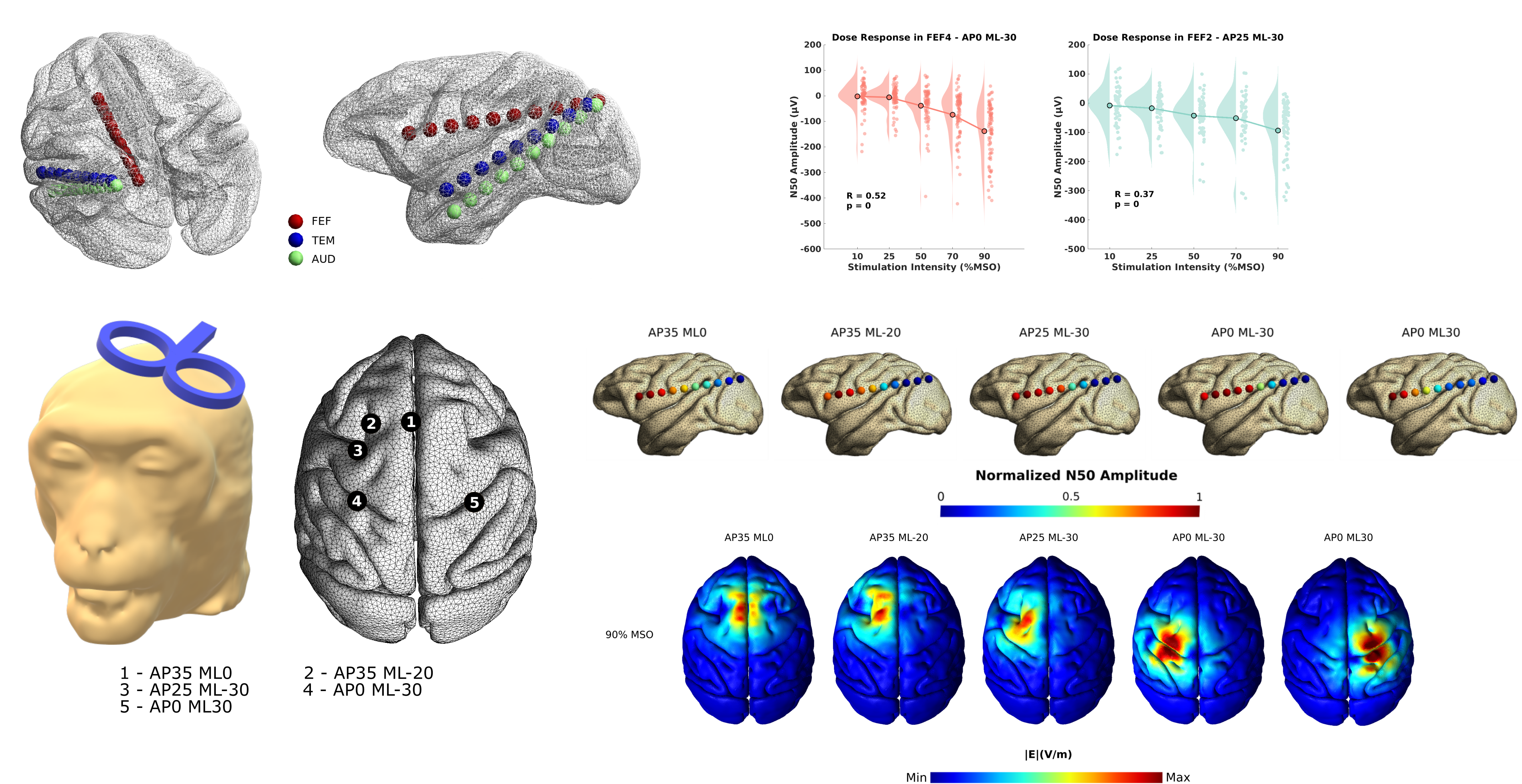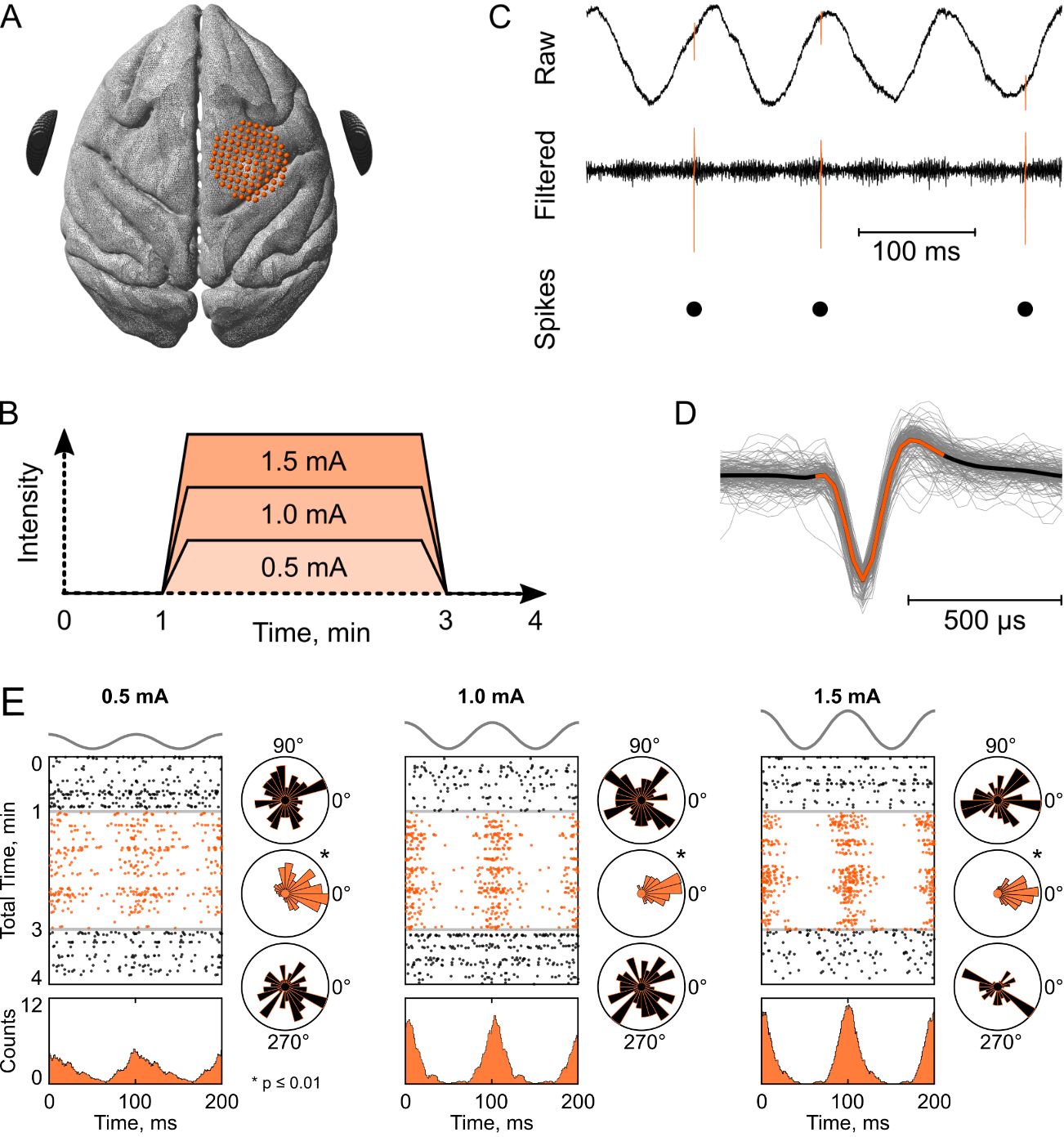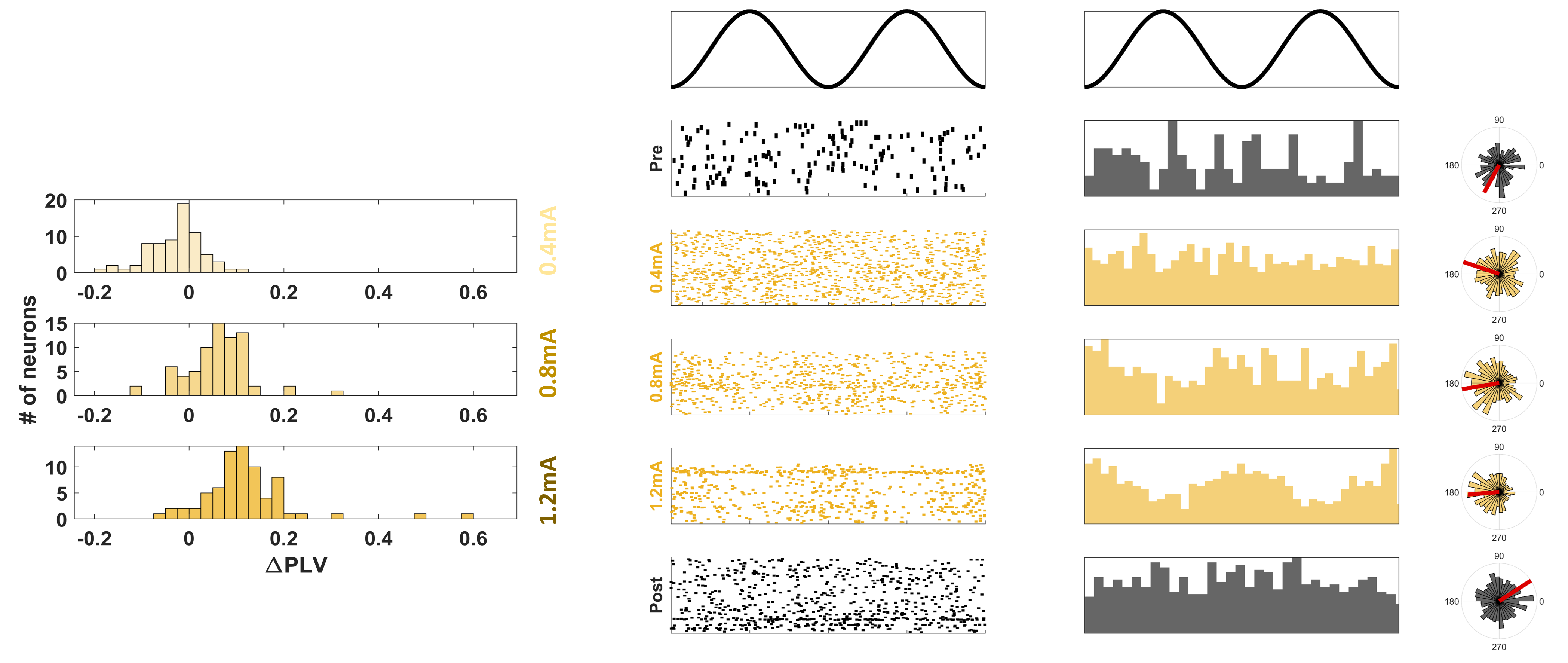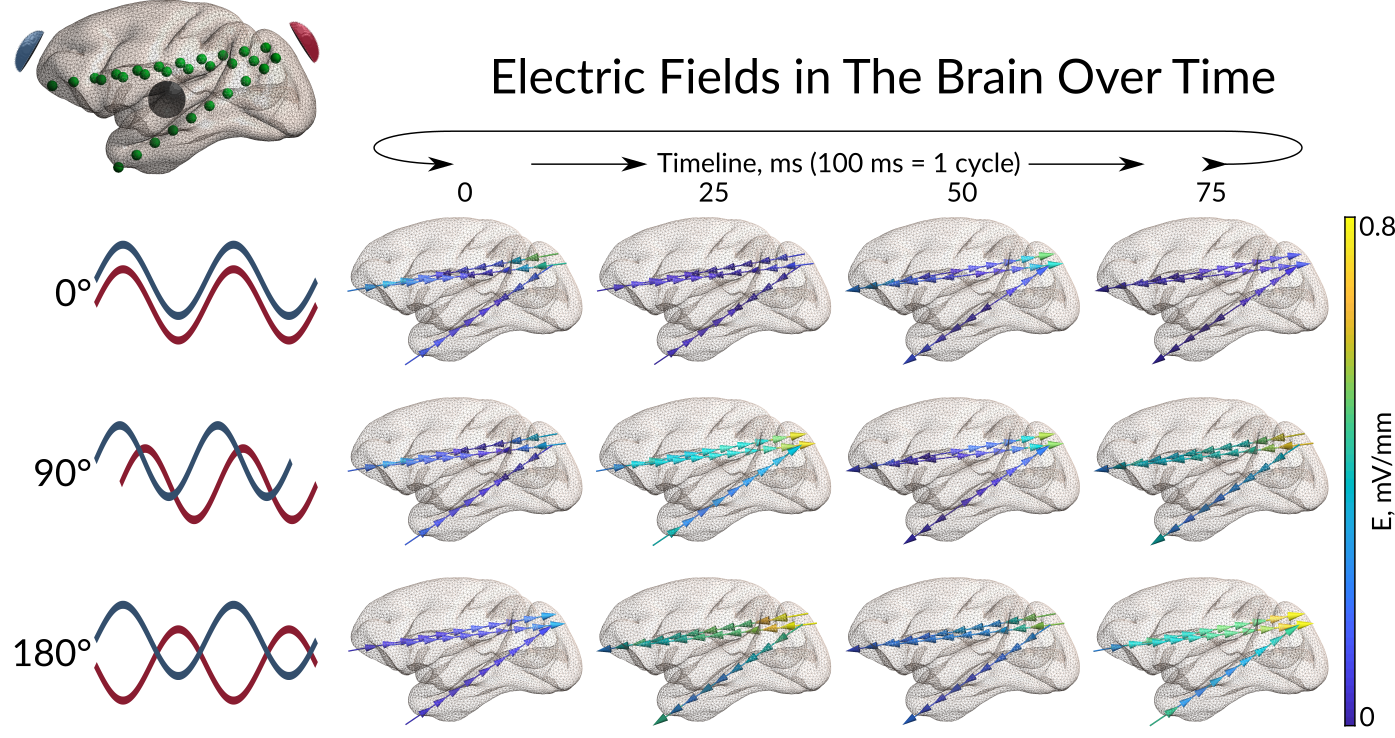Investigating TMS Neural Responses in Non-Human Primates
The neural mechanisms of Transcranial Magnetic Stimulation (TMS) are still not fully understood. We study the effects of TMS in a non-human primate model with electrophysiological recordings. Analysis of this electrophysiological data shows an early TMS-evoked potential component (N50) that is dose and stimulation location dependent. Electric field modeling can further explain these differential effects.

Mechanisms of Transcranial Alternating Current Stimulation (TACS) in Awake Non-Human Primates
(A) TACS set-up with single-neuron recordings. (B) Three TACS intensities. (C) Example of a single channel data and spike extraction. (D) Butterfly plot of spike waveforms before and during stimulation. (E) The raster plots of the spiking before and after stimulation (in black) and during stimulation (in orange) in one exemplary neuron.

Intensities of tACS affect change spike timings and create neural entrainment in single cells. phase locking values (PLV) during stimulation are enhanced during all intensities and increasingly so for higher intensities for responsive neurons while the spiking rate during tACS for all neurons and responsive neurons is quite similar regardless of the tACS intensity.

Novel Dynamic Methods of TACS
Transcranial alternating current stimulation (TACS) is an emergent method of non-invasive neuromodulation that can engage frequency-specific brain oscillations. We propose a new application of multi-channel TACS to hyper- or de-synchronize distant brain regions by driving them with the same frequency but at different phases.
